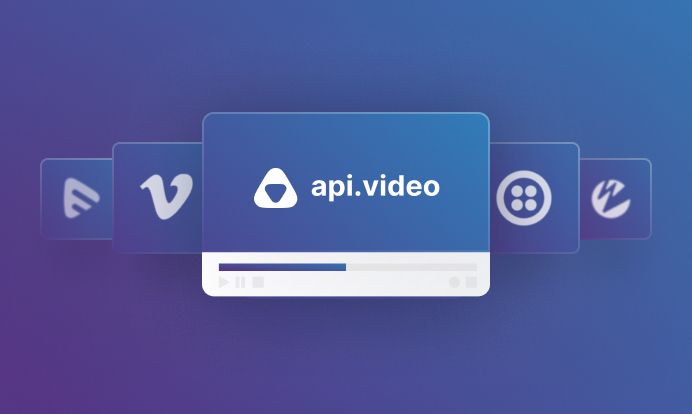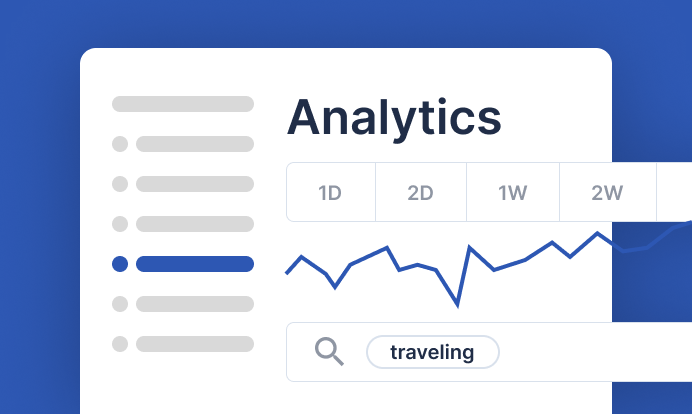In a world where attention spans are shorter than an Instagram cat video, integrating videos into your product can be your secret weapon to grab eyeballs, build connections, and turn clicks into conversions. But with the immense information available on the internet, how do you filter the best video API for your business?
Here’s a list of top 5 video APIs, with detailed information about what they do and their pros and cons. Let’s start!
What are video APIs and why do I need them?
Video APIs are tools that let you add video capabilities to your products or services without building everything from scratch. They handle complex tasks like uploading, encoding, streaming, and playback, saving time and effort. Using video APIs means quicker and cost-effective integration, enhancing user experience with engaging video content. You could be using video APIs for boosting customer engagement or creating a feature-rich app – in both cases, they do the job of simplifying the process, making your offering more appealing and competitive.
The best video APIs in 2023
Let us look at the top 5 video APIs that will help you manage your videos and live-streams efficiently.
1. Api.video
Api.video ranks at the top when it comes to building an app for live streaming videos or creating video-on-demand. The video API lets you build on-demand and livestream videos directly from your application, website or software. What makes api.video the best video streaming API is its scalability, easy-to-understand documentation, and affordable pricing.. We also recently launched the Analytics feature – that helps you analyze your users, videos, and live streams.
Another unique feature of api.video is that it does not increase the prices with improvement in quality, that is – we charge you the same for 480 p and 4K resolution. There's also zero platform fee and you only pay for what you use. With volume discounts in place, your costs decrease when the volume increases.
Pros:
- Simple and extremely user-friendly API for video hosting and streaming.
- Real-time analytics for viewer engagement.
- Built-in transcoding and adaptive streaming.
- Pay-as-you-go pricing model so you pay only for what you use
- Ability to white-label your videos
Cons:
- You need a developer to implement the video API
Don’t believe what we say? Talk to our team or sign-up for a sandbox box and test the features of api.video for yourself.
2. Vimeo
Vimeo is one of the most popular video streaming API. It is a valuable asset for businesses aiming to incorporate video into their business models without requiring dedicated technical resources of their own. It uses multiple languages like PHP, Python, and Node.js, making it usable by and accessible to a larger variety of businesses. Vimeo is so popular also because of its features of Video Player API, Upload API and Embed API, which give the user immense flexibility of options while creating and editing their content.
Pros:
- Robust video management and organization.
- Customizable video player and embed options.
- Rich video analytics for insights into viewer behavior.
- Privacy settings and access controls.
- Integration possibilities with applications and workflows.
- Offers APIs for developers.
Cons:
- Costs can vary based on storage, bandwidth, and features.
- Limited free tier with some restrictions.
- Dependency on an external service for streaming.
3. Wowza
The API provides a range of features, including adaptive bitrate streaming, real-time analytics, and customizable player options. Wowza Video API simplifies the complexities of video streaming, enabling users to deliver high-quality content to global audiences with ease. You could be building interactive live events or deploying video-on-demand services, Wowza Video API is a good option for building video streaming experiences.
Pros:
- Advanced streaming capabilities for both live streaming and video-on-demand.
- Scalable infrastructure that can accommodate various streaming demands.
- Customizable video players to align with branding.
- Support for multi-platform compatibility, reaching a wider audience.
- Low latency streaming for real-time applications.
- Security features, including secure streaming and authentication.
- Analytics and monitoring tools for insights.
Cons:
- Complex for those new to streaming APIs.
- Higher costs for advanced features.
4. Muvi
Muvi Video API is one among the best API for video streaming as it lets developers easily integrate video streaming capabilities into their websites or apps without much technical complexity. It provides a simple and user-friendly solution to stream videos, manage content, and offer an immersive viewing experience to users. With Muvi Video API, you can customize your video player, securely deliver content, and even monetize your videos through pay-per-view or subscription models.
Pros:
- End-to-end video streaming solution covering content hosting to monetization.
- Customizable platform for creating branded apps and websites.
- Multi-device compatibility.
- Built-in security features.
- No revenue-sharing model, allowing you to keep your earnings.
Cons:
- Slightly complex for setting up and managing a full-fledged streaming platform.
- Potentially higher costs for comprehensive features.
5. Twilio
Twilio Video API stands out for its versatility, allowing smooth integration of video communication across various platforms like web, mobile, and IoT devices. It offers a wide range of communication options beyond standard video chat, such as multi-party conferencing, screen sharing, and recording. Additionally, Twilio's robust infrastructure ensures low-latency and high-quality video streams, making it ideal for real-time applications like virtual events, online collaboration, and telemedicine. The API's reliable global reach, multi-platform support, and extensive developer tools make it an apt as a comprehensive and powerful solution for video communication needs.
Pros:
- Comprehensive communication platform that includes video capabilities.
- Scalable and reliable infrastructure.
- APIs for embedding video into applications.
- Integration with other Twilio communication tools.
Cons:
- Primarily designed for communication with video as an added feature.
- Might require additional development effort to fully integrate video functionality.
Video APIs have changed how we engage with online videos. These tools easily add video features to apps, sites, and services, letting developers create interactive video experiences. Live streaming, playback, and content analysis become simple with video APIs, improving viewing.
Now that you know all about video APIs and the best recommendations for the same, let’s get streaming!
Sign-up for a free sandbox account to try out api.video’s video API, or talk to our team to get a demo.




